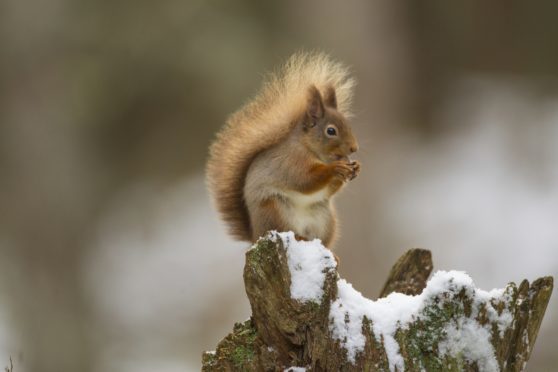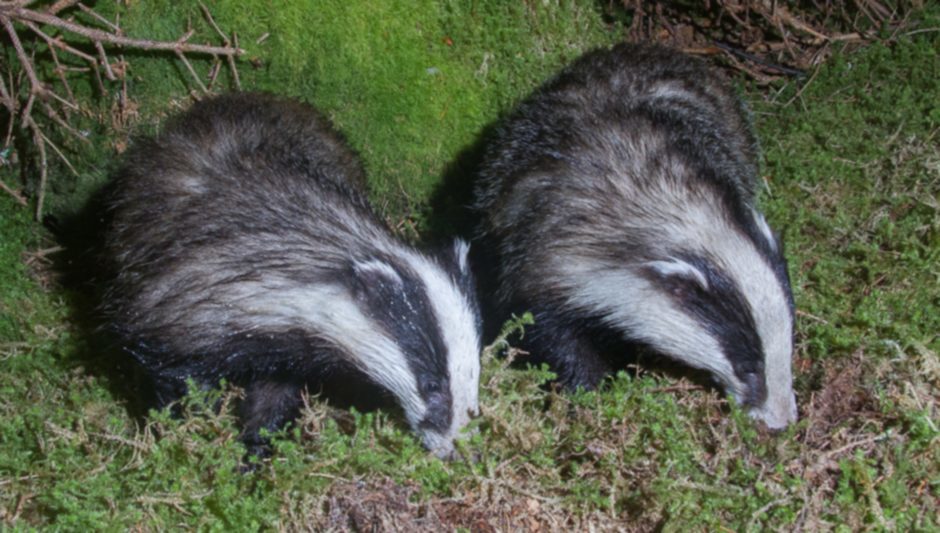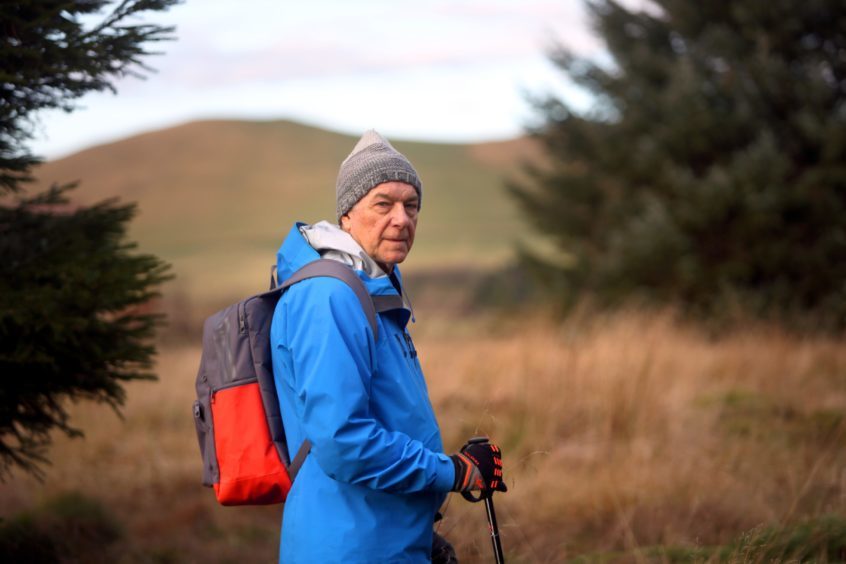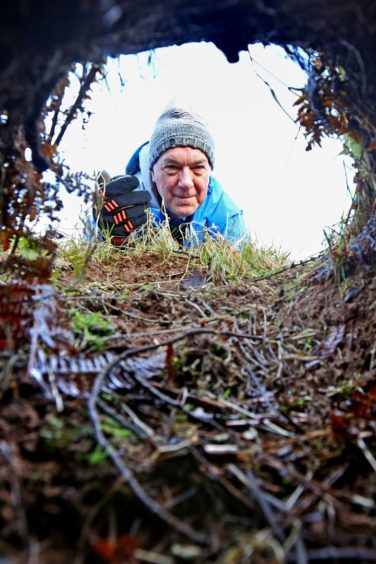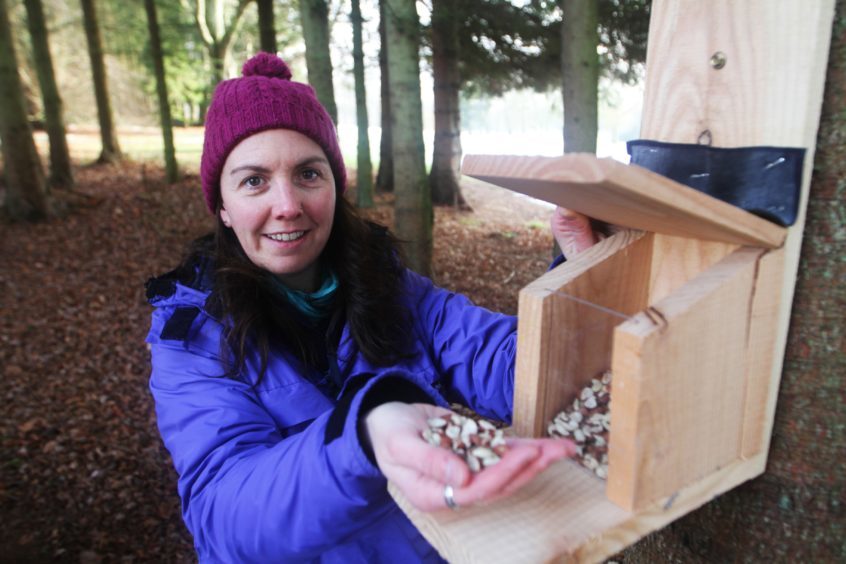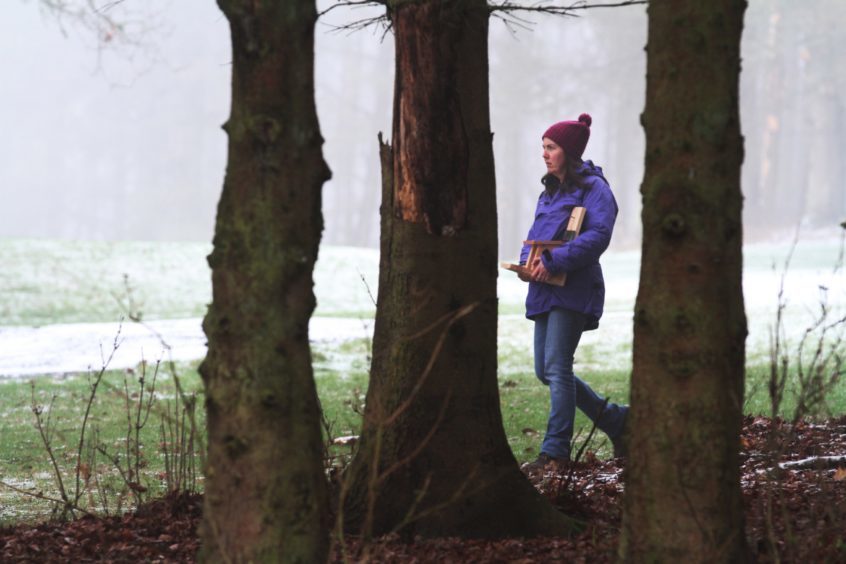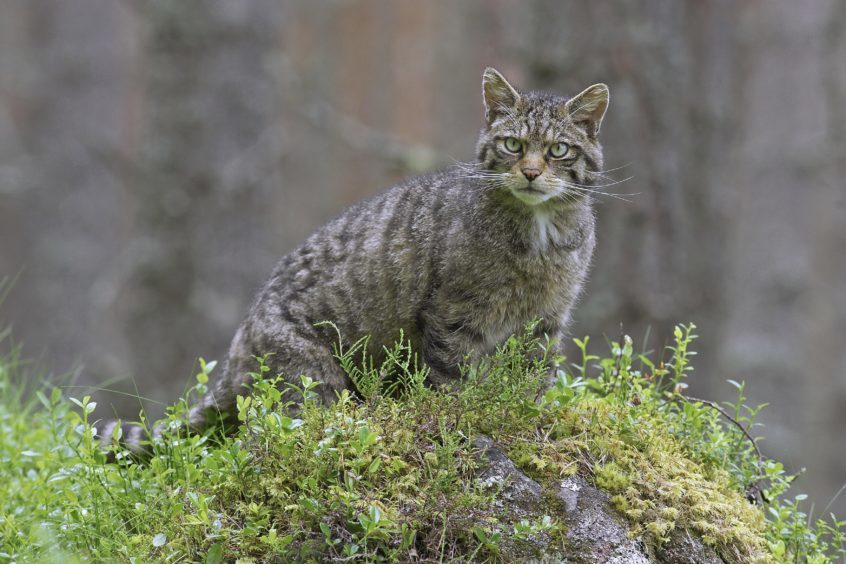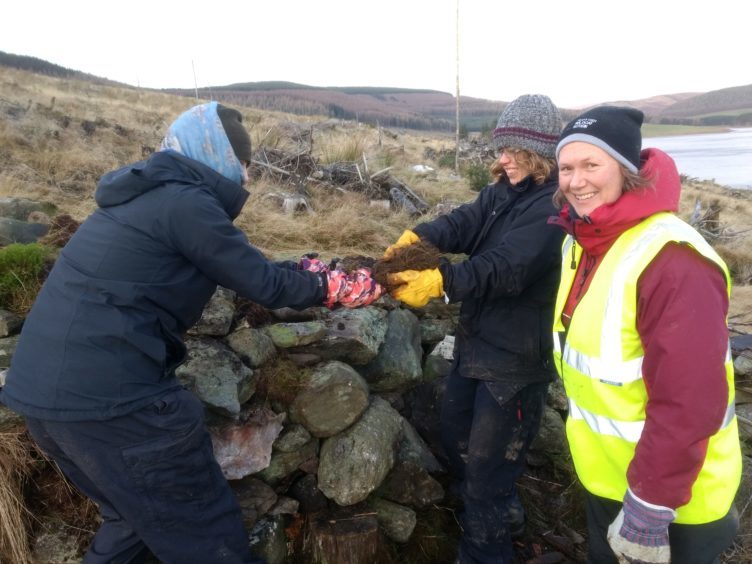Many animal species in Scotland have suffered massive declines in the past but many are recovering – or showing signs of recovery – thanks to volunteers working to protect them. Gayle Ritchie talks to some of Courier Country’s animal conservation heroes
Scotland is home to a diverse range of wildlife, from beavers to basking sharks, badgers to bats.
Whether through illegal persecution or changes to their natural environment, some species, such as the hedgehog and the Scottish wildcat, are critically endangered.
But it’s not all bad news – pine marten and golden eagle numbers have increased and there’s a healthy population of badgers in Scotland.
“While many animals in Scotland have experienced decreased numbers, volunteers are helping to reverse these declines,” says Debbie Bassett, Scottish Natural Heritage (SNH) biodiversity strategy manager.
“Hopefully seeing the positive effects volunteers are having will inspire more people across Scotland to help our animals and nature thrive.”
Here we meet Courier Country conservationists working to protect the species they love…
STANDING UP FOR BADGERS
One chilly December morning, Eddie Palmer went for a walk to monitor a badger sett near Forfar.
“There was steam coming out of it and I imagined I could hear badgers snoring,” he smiles.
As chairman of Scottish Badgers, Eddie is passionate about the species’ survival and keen to get people on board to help.
A 2009 survey concluded there were roughly 45,000 badgers in Scotland.
“The badger population in Scotland is rising slightly and they’re moving north and up to higher levels,” he says.
“Because more people have trail cameras, more are picked up and therefore the perception is that there might be more.”
The badger is particularly vulnerable because it’s one of the few mammals that has a permanent home, meaning that baiters know to return there.
“A clan in a badger sett usually stays there forever,” says Eddie.
“Some setts, which consist of a network of tunnels, chambers and entrances, can boast up to 15 badgers.”
It’s when they leave the sett that they’re most vulnerable – when they’re stockpiling food for winter, such as earthworms, beetles, grubs and bulbs.
“The sows push out the yearlings and they wander around without knowing where they’re going,” says Eddie.
“Or they may be forced to leave the sett because of building or construction works.
“They can get into people’s homes, as was the case with one that curled up in a cat’s bed last year!”
In some cases, badger clans can be moved by building artificial setts and tempting them to move there with food, but that takes weeks.
“Big projects, like the Aberdeen city bypass, work with us to protect and move on badgers in the best way possible,” says Eddie.
“But displacement is a big problem. “They can also cause minor problems for farmers by digging holes in fields, but there are laws to stop machinery from going within 30m of a sett and big builds need licences from SNH. The problem is that not everyone asks for a licence.”
The worst threat to badgers is baiting, a crime that shows no sign of going away, thanks to the dog fighting scene getting bigger.
“Terriers dig down into setts and they either make the dog fight with the badger on the spot and kill it or take it away for an official fight. They might set dogs on the badger in an open field or take it to a pub cellar or isolated farm barn to fight several dogs. It’s beyond horrific.”
What can be done? “
Because these crimes often happen in isolated countryside, police are up against it in detecting them,” says Eddie.
“They rely on the public reporting suspicious activity.”
There’s a misconception that badgers are diseased creatures when, in fact, Bovine TB is not prevalent in Scotland – it comes in occasionally via infected cattle from England or Ireland, and is immediately dealt with by farmers and vets.
SQUIRRELLING AROUND
Ann-Marie MacMaster is up to her ears in peanuts, feeder boxes and sticky tape when I meet her in Dundee’s Camperdown Park.
As Tayside’s Conservation Officer for Saving Scotland’s Red Squirrels (SSRS), she’s co-ordinating the annual spring survey, which monitors squirrel populations across the region.
While 75% of the UK’s remaining red squirrels are found in Scotland, this equates to just 120,000.
The greatest threat to the survival of reds is the spread of the invasive, non-native grey squirrel, which was first introduced to Scotland from North America in the early 1900s.
“Greys out-compete reds for food and living space,” says Ann-Marie.
“They can also carry squirrel pox, a virus that doesn’t harm them but is deadly to red squirrels.”
Red squirrels have been completely replaced by greys in the Central Belt and some parts of South Scotland.
However, Scotland is still home to healthy red squirrel populations that, if protected, can continue to thrive for future generations to enjoy.
That’s where Ann-Marie and her team of volunteers come in. Over the next few weeks, they’ll be checking up on 470 feeder boxes across Tayside, monitoring which species of squirrel shows up for a feast.
“Most boxes are on trees already so volunteers check they’re in good condition and scrape out and disinfect them,” says Ann-Marie.
“They go back in early March and fill them up with peanuts and attach sticky pads.
“When a squirrel’s hair gets stuck, we can identify which species has been there, although other animals, like pine martens, can also go in!”
Volunteers return twice, each time replacing sticky pads and peanuts. Ann-Marie says the project has enough volunteers this season but people can still help by reporting sightings of red or grey squirrels, dead or alive.
“Aberdeen has been incredibly successful in that we’re seeing reds in city parks – a direct result of the grey squirrel removal programme,” she says.
“That’s worked because people have told us they’ve seen greys.
“When you remove greys, depending on the area, reds are likely to return.”
Now is a good time to see red squirrels as it’s mating season and you’re likely to spot them chasing each other in trees.
Contrary to popular belief, they don’t hibernate; they’re unable to retain enough body fat to survive.
However, they’re not fans of the cold and can sleep in their dreys for up to 20 hours a day, which explains why you rarely see them in winter.
During summer and autumn, squirrels busy themselves foraging for nuts and seeds to hoard in different locations, including in the ground and in tree hollows.
“It’s hard for squirrels at the end of spring when their food cache starts to dwindle,” says Ann-Marie.
“So they may well appreciate any nuts you put out!”
Since receiving Heritage Lottery Funding in April 2017, the project’s core mission has been “developing community action”.
“It’s about engaging with communities and empowering people to take action to protect red squirrels where they live,” says Ann-Marie.
WILD ABOUT CATS
Nicola Tallach of Scottish Wildcat Action (SWA), says: “The Scottish wildcat is an animal close to people’s hearts; we don’t want to see it disappear.”
If groups like SWA don’t work to save the species, the risk of it becoming extinct is almost certain.
Across Scotland, surveys indicate there are between 100 and 300 wildcats (although numbers could be lower than 100) and it’s thought there could be up to 25 in the Angus Glens.
Hybridisation and disease are the biggest threats to their survival so SWA focuses on identifying, neutering and vaccinating feral, domestic, farm and hybrid cats via the TNVR (Trap Neuter Vaccinate Release) programme.
This is conducted with an army of volunteers, some who set up trail cameras to detect cats, and others who set and monitor cage-traps which lure cats inside.
“If hybridisation continues unchecked, hybrids continue breeding,” says Nicola, SWA project officer for Angus Glens and Strathpeffer.
“With each successive generation, there are fewer wildcat genes in each cat and less chance of wildcats surviving long-term.”
Nicola encourages landowners to use “wildcat-friendly” methods during predator control, such as using cage traps, rather than lamping or snaring.
To keep watch on the dwindling species, trail cameras are set up in places wildcats have been spotted, and also at areas which offer good habitat, such as edges between woodland or scrub and rough grasslands containing voles – a cat’s dream.
In the Angus Glens and Strathbogie, SWA has been working with the Forestry Commission to create artificial den sites for wildcats.
If they prove tempting, they’ll be a useful tool in improving breeding success. They also work with the Royal Zoological Society, which operates the Conservation Breeding Programme.
“If wildcat numbers get critically low, we may have to supplement remaining ones with captive-bred wildcats,” says Nicola.
“It’s a safety net if the situation gets any worse.”
Her advice is to ensure all cats are neutered, vaccinated and microchipped, and to report feral and wildcat sightings to the SWA.
info
Want to help? You can report sightings of cats living in the wild to help build a picture of what’s out there – www.scottishwildcataction.org
Help badgers by becoming a sett monitoring volunteer, event volunteer or fundraising volunteer with Scottish Badgers – www.scottishbadgers.org.uk – and by reporting sightings of the creatures, dead or alive.
Volunteer to help res squirrels via scottishsquirrels.org.uk, whether simply reporting sightings or participating in annual spring surveys.
You can also report wildlife sightings via www.brc.ac.uk/irecord/. Data can be used to make informed decisions for Scotland’s wildlife.
